Timeline
- 1979
- 1982
- 1983
- 1984
- 1985
- 1988
- 1996
- 2003
- 2006
- 2007
- 2011
- 2012
- 2013
- 2014
- 2015
- 2016
- 2017
- 2018
- 2019
- 2020
- 2021
- 2022
- 2023
- 2024
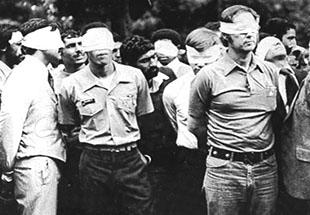
Only months after the Islamic Revolution, a radical group of Iranian students stormed the American Embassy in Tehran, taking 66 Americans hostage, 52 of which were held for 444 days. Supporting the students’ actions, Supreme Leader Ayatollah Khomeini “issued a statement in support of the action against the American ‘den of spies.’”
The hostages were beaten, placed in solitary confinement for extended periods of time, regularly forced to have their hands bound, and “threatened repeatedly with execution.” The Iranian militants also tortured the hostages by forcing them to watch videos of people being dipped in boiling tar or shot in the head.
On January 20, 1981, the day of Ronald Reagan’s presidential inauguration, the remaining 52 hostages were released and returned to the U.S.
Spanning a full decade, the Lebanon Hostage Crisis refers to systematic abductions of foreign nationals in Lebanon by the Iranian-backed terrorist group Hezbollah. Of the total 96 foreign nationals abducted, 25 U.S. citizens were kidnapped, making Americans the most targeted national group. A number of hostages died in captivity as a result of inadequate medical care, torture, or execution. During the crisis, some victims spent years in captivity, while others, including CIA Station Chief William Buckley, were tortured and killed. Among those held captive was American University of Beirut President David S. Dodge, who was held for a full year in Lebanon and Iran, and American journalist Terry Anderson, who was abducted and held in captivity for almost seven years.
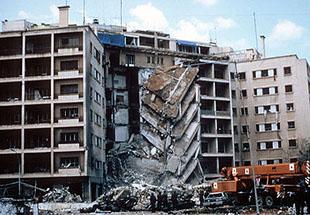
63 people, including 17 Americans, were killed and more than 100 injured when a suicide bomber rammed a truck carrying 2,000 pounds of explosives into the U.S. Embassy in Beirut. The bombing resulted in the killing of "the entire U.S. Central Intelligence Agency Middle East contingent." The attack, directed by Hezbollah and financed by Iran, “initiated the modern era of suicide bombings.”
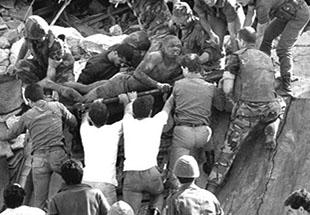
241 U.S. marines were killed and over 100 wounded when an Iranian suicide bomber drove a truck carrying the equivalent of 15,000-21,000 pounds of TNT into the U.S. Marine Barracks at Beirut International Airport. Causing the "largest non-nuclear explosion that had ever been detonated on the face of the Earth," the bombing was the “deadliest terrorist attack on Americans before 9/11.” At the same time, a separate suicide truck bomb destroyed a building housing French soldiers, killing 58 French paratroopers. The Marines residing in the U.S. barracks had been sent to Lebanon “as part of a multinational force to help separate the warring Lebanese factions” in the ongoing civil war.
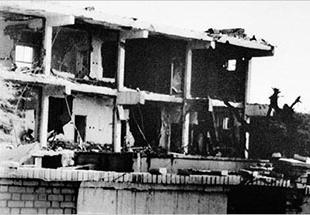
Part of a series of attacks aimed at “six key foreign and Kuwaiti installations,” the bombing of the U.S. embassy in Kuwait left five victims dead and eighty-six injured. Other targets included “the French embassy, the control tower at the airport, the country's main oil refinery, and a residential area for employees of the American corporation Raytheon.” The attack was carried out by "Hezbollah and operatives of the Iranian-backed Iraqi Shiite group Da'wa."
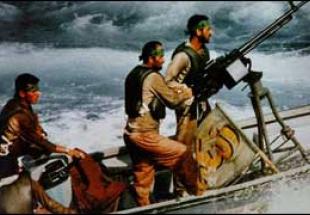
Between 1984 and 1988, Iran launched a number of attacks on oil tankers belonging to Iraq and its ostensible Gulf allies, such as Kuwait and Saudi Arabia. In response to the attacks, the U.S. reflagged Kuwaiti tankers, making the ships eligible for U.S. Navy escort. From July 24, 1987 to September 26, 1988, over a dozen U.S. warships protected Kuwaiti tankers in the Persian Gulf as part of Operation Earnest Will, the largest maritime convoy operation since World War II. In response to U.S. convoys, Iran laid nearly one hundred mines in international waters, threatening to disrupt the world’s economy and endangering the lives of American sailors.
On July 24, 1987, the reflagged supertanker SS Bridgeton sustained hull damage and needed repairs after it struck a naval mine off the coast of an Iranian island. On October 16, 1987, when the reflagged U.S. tanker Sea Isle City was struck by an Iranian Silkworm missile. The ship’s captain, a U.S. citizen, was blinded as a result of the explosion, and a total of 17 crewmen were wounded.

24 people were killed when a van carrying three thousand pounds of explosives detonated outside the U.S. Embassy annex in East Beirut. Among those killed were two Americans: 33-year-old Chief Warrant Officer Kenneth V. Welch and 30-year-old Petty Officer First Class Michael Ray Wagner. The CIA noted at the time that that "an overwhelming body of circumstantial evidence points to Hizballah, operating with Iranian support under the cover name of Islamic Jihad."
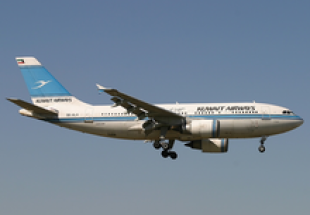
On December 3, 1984, four Lebanese hijackers affiliated with Hezbollah took control of Kuwait Airways Flight 221 and diverted the plane to Tehran’s Mehrabad Airport. The hijackers demanded the release of 17 prisoners being held in connection to the December 1983 U.S. Embassy bombing in Kuwait. When their demands were not met, the hijackers executed two American officials from the U.S. Agency for International Development, Charles Hegna and William Stanford. Other American passengers onboard were threatened and tortured. Finally, on the sixth day of the standoff, Iranian security forces stormed the plane and freed the hostages. However, the hijackers were released and allowed to leave Iran shortly thereafter. The fact that the hijackers were never tried for their crimes has led some officials to speculate that the Iranian government was complicit in the plot, and that the hijackers’ surrender had been arranged with Iranian authorities ahead of time.
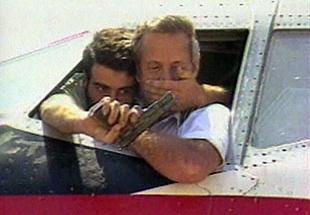
On the morning of June 14, 1985, members of Iran-backed Hezbollah hijacked TWA Flight 847 in order to gain leverage in their demands for “the release of Shia prisoners held in Kuwait, Israel, and Spain.” Iran played a central role in both the “supervision and planning of the incident.” The plane, carrying 153 passengers landed in Beirut and then Algiers, where a number of hostages were released. After landing in Beirut for a second time, passenger Robert Dean Stethem, a U.S. navy diver, “was shot and his body dumped on the airport tarmac." Although Israel never admitted to a deal, the remaining 39 TWA hostages were freed June 30, and the release of 766 Shia prisoners detained by Israel began July 1.

On April 14, 1988, the USS Samuel B. Roberts struck an Iranian mine while deployed in the Persian Gulf as part of Operation Earnest Will. The explosion blew a twenty-two foot hole into the side of the ship and flooded the engine room, nearly sinking the ship. 69 crewmembers were injured due to injuries sustained in the blast as fires raged onboard the frigate for six hours. In total, the Roberts sustained approximately $89.5 million worth of damage.
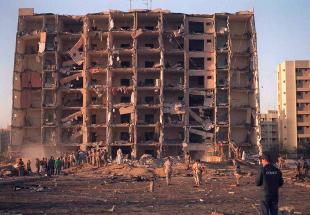
The bombing of Khobar Towers, a U.S. military housing complex in Saudi Arabia, left nineteen Americans dead and 372 injured. The attackers detonated a parked truck laden with the equivalent of 3,000-8,000 pounds of explosives in the Khobar Towers parking lot. The resulting explosion “sheared the face off of Building 131, an eight-story structure which housed about 100 U.S. Air Force personnel.” 14 members of the Iran-backed Saudi branch of Hezbollah have been held responsible for the attack.
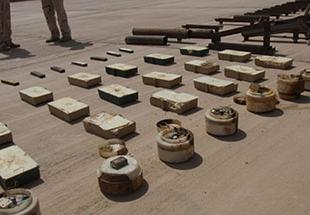
Following the 2003 U.S. invasion of Iraq, Iran undermined U.S. operations by "consistently [supplying] weapons, its own advisors, and Lebanese Hezbollah advisors to multiple residence groups in Iraq, both Sunni and Shia,” which targeted Coalition Forces. For the U.S., “concern [revolved] around Iran’s role in arming and assisting Shiite militias.” In Iraq, the "the top killer of U.S. troops” were IEDs (improvised explosive devices), which were primarily supplied by Iran. In total, Iran’s support for Iraqi insurgents led to the death of thousands of U.S. soldiers in Iraq. In 2010, U.S. ambassador to Iraq James Jeffery stated, "Up to a quarter [4,400] of the American casualties and some of the more horrific incidents in which Americans were kidnapped ... can be traced without doubt to these Iranian groups."
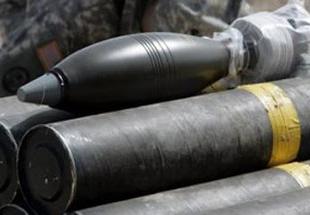
Iranian support for the Taliban against U.S. troops in Afghanistan has been ongoing since at least 2006. According to a RAND report, "although Iran has traditionally backed Tajik and Shi'a groups opposed to the Taliban, its enmity with the United States and tensions over the nuclear program… led it to provide measured support to the Taliban." According to the Treasury Department, “since at least 2006, Iran has arranged frequent shipments of small arms and associated ammunition, rocket propelled grenades, mortar rounds, 107 mm rockets, plastic explosives, and probably man-portable defense systems to the Taliban." Through “Qods force material support,” the report states “we believe Iran is seeking to inflict casualties on U.S. and NATO forces.” In 2010, multiple media sources reported Iran was “paying Taliban fighters $1,000 for each U.S. soldier they kill in Afghanistan.” Over a six-month period in 2010, one “Taliban treasurer” claimed to have collected “more than $77,000 from [an Iranian firm in Kabul]” as payment for killing Americans.
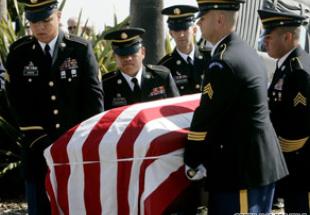
Five American soldiers are killed and three wounded after a sophisticated attack by Iraqi militants on the Iraqi police provincial headquarters in Karbala, Iraq. The militants, who spoke English and carried American weapons, were disguised in U.S. military fatigues and bypassed several security checkpoints before attacking the inner compound. After killing one American soldier at the headquarters, the militants captured four more servicemen before fleeing the scene and then executing them near the Euphrates River. The attack was carried out by Iranian IRGC-backed militants after overwhelming evidence linked Iran to the attack in order to weaken coalition forces. According to a captured Hezbollah fighter, the attack could not have been conducted without intelligence and training provided by the IRGC's elite Quds Force.

Following an August 12, 2007 meeting with Iranian dignitaries, the leader of U.S. forces in Iraq General David Petraeus wrote in a report to Defense Secretary Robert Gates, “I am considering telling the President that I believe Iran is, in fact, waging war on the U.S. in Iraq…I do believe that Iran has gone beyond merely striving for influence in Iraq and could be creating proxies to actively fight us, thinking that they can keep us distracted while they try to build WMD and set up [the Mahdi Army] to act like Lebanese Hezbollah in Iraq.” In July 2007, “two-thirds of all American casualties in Iraq…were incurred by Shiite militias” like the Shiite Mahdi Army, which were funded, organized, and trained by Iran.
Cyber intelligence firm iSight Partners has uncovered a three-year Iranian espionage campaign in which Iranian hackers created fake social media accounts and personas in order to spy on at least 2,000 U.S. military and political leaders, including a four-star U.S. Navy admiral, senior U.S. lawmakers, and personnel from U.S. and Israeli defense contractors. Dubbed “Newscaster,” this operation fabricated a news site, NewsOnAir.org, to which content from media outlets was posted and then links were forwarded to targets. After gaining the trust of officials by establishing ties with their friends, relatives, and colleagues on various social media platforms, the hackers would send the officials real news articles, eventually sending them malicious links in an attempt to steal their log-in credentials to government websites and obtain data on diplomatic negotiations and weapons systems. ISight has stated that considering this espionage campaign had been going on for three years while remaining under the radar, “clearly they have had success” although it is not completely known what or how much data the hackers were able to access.

U.S. authorities thwarted a terrorist plot in Washington, D.C., which included “the assassination of the Saudi Arabian ambassador to the United States…and subsequent bomb attacks on the Saudi and Israeli embassies.” U.S. Attorney General Eric Holder stated that the plot was “directed and approved by elements of the Iranian government and, specifically, senior members of the Quds Force.” The two individuals charged were “Manssor Arbabsiar, a 56-year-old naturalized U.S. citizen holding both Iranian and U.S. passports, and Gholam Shakuri, an Iran-based member of Iran’s Qods Force.” U.S. authorities arrested Arbabsiar on September 29, 2011, while Shakuri remains at large.
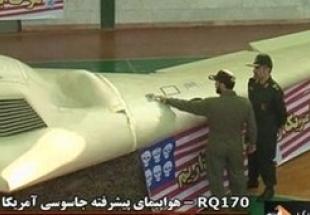
Iran recovered a U.S. unmanned aerial vehicle (UAV) that crashed in Iran while flying reconnaissance missions in Western Afghanistan. According to U.S. officials, the UAV, an advanced RQ-170 with sophisticated stealth technology, was flying over Afghanistan looking for insurgent activity when its guidance system malfunctioned. However, experts briefed on the incident have reported that the drone was participating in a highly secretive surveillance program which monitors Iranian nuclear sites. The U.S. military expressed concern that Iran could reverse-engineer the captured drone in order to better understand the U.S.’ stealth capability. Although Iran claimed it shot down the drone, U.S. officials dismissed such claims, stating that a system malfunction caused the crash and that there was “no indication” that hostile fire brought the drone down. Iran has refused to comply with the Obama administration’s formal requests to return the drone.

Beginning in late 2011, the Iranian hacker group Izz ad-Din al-Qassam Cyber Fighters launched “unprecedented” distributed denial of service (DDoS) attacks on American financial institutions. The attacks escalated throughout 2012, targeting at least nine different U.S. banks, including Bank of America, Citigroup, Wells Fargo, U.S. Bancorp, PNC, Capital One, Fifth Third Bank, BB&T.
The attacks focused on harming the daily operations and reputations of the banks, whose customers were unable to access their online accounts due to website crashes. These attacks continued for weeks despite mounting warnings from the U.S. government to cease cyberattacks. In March 2013, the online services of American Express and JPMorgan Chase were taken down in the latest suspected Iranian cyberattack.
According to security experts, the Iranian cyberattacks directed at American banks were exponentially stronger than Russia’s month-long cyberattack on Estonia in 2007.
U.S. and Israeli officials were among those targeted for assassination by a group of IRGC-linked terrorists arrested in Baku, Azerbaijan. Azerbaijani authorities confirmed that the 22 arrested terrorists received training in Iran. The assassination plot included snipers, as well as a car bomb intended to kill American embassy employees. In addition to attacking the embassy building, the terrorists planned on targeting embassy employees’ family members.
According to The Washington Post, “U.S. and Middle Eastern officials now see the attempts as part of a broader campaign by Iran-linked operatives to kill foreign diplomats in at least seven countries over a span of 13 months.”
According to U.S. officials, in August 2013 Iranian hackers infiltrated the unclassified U.S. Navy Marine Corps Internet (NMCI), which is used for email and the service’s internal intranet. Although it is believed nothing of significant intelligence value was stolen, it has increased concerns within the Pentagon that Iran may now be able to forcibly access military data. In response, the U.S. Navy is upgrading the security of its network which has an estimated 800,000 users. It took the U.S. Navy four months and cost at least $10 million to remove the hackers and repair the network after the attack. The California-based cyber security firm, Cylance, stated in a report that the hacking of the NMCI was the beginning of Iran’s “Operation Cleaver” against the United States and other foreign nations, which continued throughout 2014 and targeted financial, defense, energy, and educational institutions worldwide.
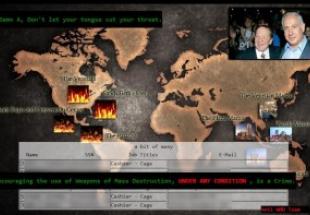
In January 2014, Iranian hackers began focused cyberattacks on Las Vegas Sands Corporation. On February 9, they succeeded in gaining access to a web development server on February 9. From this server, the hackers infiltrated the general Las Vegas Sands Corp. server and on February 10 released malware into thousands of Sands Corp’s systems, effectively destroying computers by overwriting their hard drives and compromising large amounts of data. In order to stop the malware from spreading, Las Vegas Sands Corp. decided to remove their servers from the internet, but the hackers had already littered Sands’ websites with employees’ names, social security numbers, and email addresses in addition to scathing messages attacking the Sands’ CEO Sheldon Adelson. Several days later, the hackers posted a YouTube video that detailed over a terabyte of sensitive stolen Sands’ data. Las Vegas Sands Corp. has estimated that the Iranian hackers destroyed three-quarters of its Las Vegas computer servers and that recovering the lost data and building new systems will cost in excess of $40 million.
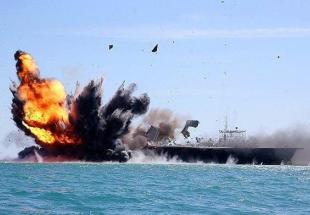
Iran’s Revolutionary Guard Corps (IRGC) blew up a mock replica of a U.S. Nimitz-class carrier in its ‘Great Prophet 9’ naval and air defense drills in the strategic Strait of Hormuz. Iranian officials touted Iran’s military prowess in response to the highly publicized drills, with the IRGC’s navy chief Admiral Ali Fadavi stating that “American aircraft carriers are very big ammunition depots” and that a “direct hit by a missile could set off a large secondary explosion.” Earlier in the year, Fadavi called America’s aircraft carriers “easy targets.” Commander of the IRGC Gen. Mohammad Ali Jafari added that the drills “send a ‘message of [Iran’s] might’ to ‘extraterritorial powers,’” a reference to the U.S.

On April 28, 2015, Iranian Revolutionary Guard Corps patrol boats seized the Maersk Tigris, a Marshall Islands-flagged cargo ship transiting through the Strait of Hormuz. Iranian forces fired shots across the Maersk Tigris’s bridge after the ship’s captain refused orders to divert further into Iran’s territorial waters. A representative for the Danish shipping company Maersk, the Tigris’s charterer, said that Iranian authorities failed to provide any arrest orders, official written documents, a court ruling, or an arrest order.
Given that "the United States has full authority and responsibility for security and defense of the Marshall Islands," the seizure of the Tigris has been viewed as both a provocation against the U.S. and as a threat to freedom of navigation on the high seas. In the days leading up to the Tigris incident, Iranian patrol boats had been acting with “mounting aggressiveness,” including “encircling and threatening a U.S.-flagged cargo vessel,” the Maersk Kensington, on April 24. Both incidents occurred shortly after the U.S. Navy increased its presence in the Gulf of Aden, preventing Iranian ships from reaching Yemen to prospectively resupply Houthi rebels with weapons.
In response to Iran’s provocations, the U.S. Navy dispatched the destroyer USS Farragut in pursuit of the Tigris. As a result of Iran’s aggression, U.S. Navy ships began escorting U.S.-flagged commercial vessels through the Strait of Hormuz in order to prevent further harassment.
Iran illicitly detained 10 U.S. Navy sailors at gunpoint, releasing videos of the captives kneeling with their hands clasped behind their heads and an apology from one of the soldiers after two naval vessels inadvertently entered Iranian waters due to a navigation error. A U.S. Navy investigation found that Iran “violated international law by impeding the boats' innocent passage transit, and they violated sovereign immunity by boarding, searching and seizing the boats and by photographing and videotaping the crew."
The U.S. Justice Department announced indictments against seven Iranian cyber specialists linked to the Iranian government and Islamic Revolutionary Guard Corps (IRGC) for cyber attacks against U.S. banks and a New York dam. The men were accused of carrying out distributed denial of service attacks–in which they hacked into bank servers and clogged it with data, preventing legitimate traffic–against 46 U.S. financial institutions, and attempting to hack into the control system of a New York dam between 2011 and 2013.
U.S. authorities arrested a pair of operatives belonging to the Iranian terrorist proxy, Hezbollah, and charged them with plotting attacks against American and Israeli targets in New York and Panama. Both men had traveled to Lebanon for weapons and bomb-making training. Ali Kourani of the Bronx, NY, was accused of scouting American and Israeli military and law enforcement targets in New York, as well as airports, while Samer El Debek of Dearborn, Michigan was accused of scouting the U.S. and Israeli Embassies in Panama, as well as the Panama Canal, for a potential attack during a 2012 visit. According to the U.S. Department of Justice, Samer El Debek “received extensive training as a bomb-maker, and has a high degree of technical sophistication in the area.”

U.S. authorities indicted nine Iranians of the Mabna Institute on cyber theft charges on behalf of the Islamic Revolutionary Guard Corps (IRGC). Since 2013, the Institute’s targets included 144 U.S. universities, the U.S. Department of Labor, the Federal Energy Regulatory Commission, and the states of Hawaii and Indiana. The U.S. Department of Justice found that the Institute “stole more than 31 terabytes of academic date and intellectual property.”
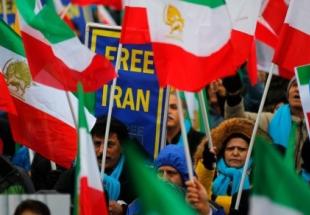
Belgian authorities arrested an Iranian couple, plotting to bomb a rally of Iranian dissidents in France. In their car, authorities found a “small toiletry bag” with around 500 grams of TATP and an ignition mechanism. The personal lawyer of the president of the United States along with other former U.S. and European officials were scheduled to participate at the rally. French officials later implicated Iran’s Ministry of Intelligence in the aborted attack.
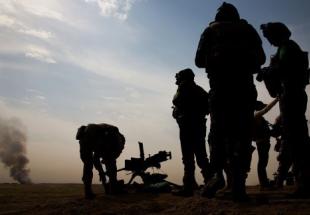
Over the course of November-December 2019, the U.S. government estimated that there were eleven attacks on Iraqi bases housing members of the U.S. military. This coincided with reporting that former Islamic Revolutionary Guard Corps (IRGC) Quds Force Commander Qassem Soleimani ordered Iran-backed Shiite militias in Iraq to increase targeting of U.S. forces using new weaponry Iran had supplied. According to Reuters, these included Katyusha rockets and shoulder-fired missiles that could shoot down helicopters.
After the drawdown of U.S. troops from Iraq in 2011, agents from within CIA networks found themselves without a job and fearful that they could be killed. They were, therefore, vulnerable to Iran’s aggressive efforts to turn them into their own assets. According to a leaked Iranian report, many of these spies were willing to cooperate with Iran’s inquiries into U.S. intelligence operations in Iraq. The files also document how Iran’s influence in Iraq’s political system afforded Iran’s two main intelligence bodies—the IRGC-QF and the Ministry of Intelligence and Security (MOIS)—leeway to operate throughout the country.
The operative, “recruited, trained and deployed by Hezbollah’s Islamic Jihad Organization (IJO) to plan and execute acts of terrorism around New York City,” becomes the first IJO operative to be convicted and sentenced for crimes against the U.S., said U.S. Attorney for the Southern District of New York. He targeted “federal buildings, international airports, and even daycares,” and now will serve 40 years behind bars.
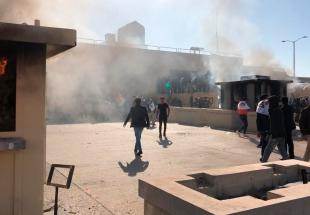
Iran-backed operatives stormed the U.S. Embassy in Iraq, setting fires inside the compound and chanting “Death to America” after the U.S. government struck Iraqi Shiite militia positions following a strike on a military base which killed an American contractor. The militants did not enter the embassy buildings but defaced the property with graffiti. Inside the protest crowd outside the embassy were the Iranian regime’s point-men in Baghdad—founder of the Badr Organization Hadi al-Amiri, former deputy head of the Popular Mobilization Forces (PMF) Abu Mahdi al-Muhandis, and chairman of the PMF Falih al-Fayad.
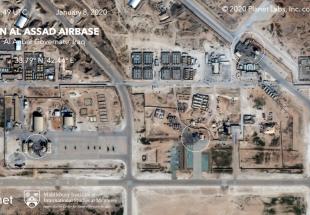
In response to the U.S. strike which killed former head of Iran’s Islamic Revolutionary Guard Corps (IRGC) Quds Force Qassem Soleimani, Iran’s IRGC launched a ballistic missile attack targeting two Iraqi military bases housing U.S. troops. The U.S. government previously determined that Iran—through Qassem Soleimani’s proxy network—was responsible for the deaths of at least 608 American troops in Iraq from 2003-11, and Secretary of State Mike Pompeo claimed that Soleimani posed an imminent threat to U.S. interests in the region. On Iran’s strike, chairman of the U.S. Joint Chiefs of Staff Mark Milley said, “The points of impact were close enough to personnel and equipment and so on and so forth, I believe, based on what I saw and what I know, is that they were intended to cause structural damage, destroy vehicles and equipment and aircraft, and to kill personnel.”
Rockets struck Iraq’s Taji military base on March 11, 2020, and March 14, 2020. Investigations into the former attacks, which resulted in the death of 2 active-duty U.S. troops, later revealed that 30 107-mm Katyusha rockets were launched at the camp.
Two months after the U.S. Justice Department unsealed an indictment against Venezuelan President Nicolas Maduro for leading an international drug trafficking ring and managing a drug cartel known as “Cartel de Los Soles,” New York federal prosecutors charged Adel El Zabayar, a Venezuelan of Syrian descent and close associate of Nicolas Maduro, in a narco-terrorism conspiracy in which he traveled to the Middle East to acquire arms in exchange for cocaine and to recruit members of Hezbollah and Hamas into the “Cartel de Los Soles,” with the intention of attacking the U.S.
Iran's Revolutionary Guards said that its forces killed three gunmen with links to the United States who tried to infiltrate its territory in the country's far northwest.

U.S. officials have been aware of a general threat against the ambassador, Lana Marks, since the spring, the officials said. But the intelligence about the threat to the ambassador has become more specific in recent weeks. The Iranian Embassy in Pretoria is involved in the plot, the U.S. government official
Iran sanctioned President Trump and nine other U.S. officials, in a parting shot against an outgoing administration that has pummeled the country and its top officials with sanctions. Iran's Foreign Ministry said that the U.S. officials were designated for their role in terrorist activities against Iran, including sanctions and last year’s killing of Iranian Maj. Gen. Qassem Soleimani in Iraq. The Iranian sanctions also targeted Secretary of State Mike Pompeo, former and current special representatives for Iran Brian Hook and Elliott Abrams, as well as former national security adviser John Bolton.
While the judiciary did not name the victim of the arbitrary incarceration, Iranian media reported that Emad Shargi, who was first abducted from his home in Iran in April 2018 and then later cleared of all charges by Tehran’s Revolutionary Court in late 2019, had been arrested while trying to leave the country through the western border. Shargi joins other U.S. nationals being held captive as bargaining chips, including Siamak Namazi, Shahab Dalili, and Morad Tahbaz. They each deny the charges, which tend to involve spying for the U.S. The United Nations described the jailing of foreigners as part of “an emerging pattern involving the arbitrary deprivation of liberty of dual nationals.”
Iranian-backed Iraqi militias were most likely behind a deadly rocket barrage on a U.S.-led coalition base in northern Iraq earlier this week, but it's not clear whether Iran had any role in directing the attack, experts and a U.S. official said on Friday. The attack on Irbil on Monday in the semi-autonomous Kurdish region of Iraq bore the telltale signs of the Shiite militias supported by Iran, with tactics, weapons and online posts that resembled previous assaults on U.S. targets in Iraq, a current U.S. official, a former senior U.S. diplomat, and a regional expert told NBC News. Iran said on Tuesday it had no links with the group that claimed to have carried out the attack.
While the investigation into the attack on Ain al-Asad air base in the western province of Anbar is still ongoing, officials believe that Kataib Hezbollah, an Iranian-backed paramilitary force, or an affiliated group was responsible, according to two defense officials familiar with early intelligence. The two defense officials requested anonymity to discuss intelligence.
Communications intercepted by the National Security Agency in January showed that Iran’s Revolutionary Guard discussed mounting “USS Cole-style attacks” against the Army post, referring to the October 2000 suicide attack in which a small boat pulled up alongside the Navy destroyer in the Yemeni port of Aden and exploded, killing 17 sailors. The intelligence also revealed threats to kill Gen. Joseph M. Martin and plans to infiltrate and surveil the installation, according to the officials, who were not authorized to publicly discuss national security matters and spoke on condition of anonymity. The Army post, one of the oldest in the country, is Martin’s official residence.
Islamic Revolutionary Guard Corps Navy (IRGCN) speedboats armed with deck-mounted machine guns and rocket launchers came within 62 meters of the USS Firebolt and a U.S. Coast Guard patrol boat on their patrol of the Persian Gulf. In response to the threat, the USS Firebolt fired warning shots to stave off a further confrontation. Again, in November, Iran menaced a U.S. Navy vessel; this time in the Gulf of Oman with a naval helicopter. These encounters represent a trend: the IRGC is increasing pressure on the U.S. in the hopes that it bends to Iranian demands in the ongoing Vienna negotiations.
Amid continued talks about a revived nuclear agreement between Washington and Tehran, Iran released a video clip on Sunday depicting fake attack of its military blowing up the U.S. Capitol. The video came out on state-controlled Iranian television before the nation's supreme leader, Ali Khamenei, gave a speech on Sunday, according to The Washington Free Beacon. In his talk, Khamenei praised the Islamic Revolutionary Guards Corps (IRGC), who have carried out operations against the U.S. and whose leader, Qassem Soleimani, was killed by a drone strike by the Trump administration. The footage of the fake attack also came out the same day Iran's President Hassan Rouhani declared the U.S. had lost its "economic war" against his country, saying that sanctions against Tehran are at the "brink of extermination," his rhetoric painting a grim picture for the prospect of the two nations reaching a mutual agreement on a revived Iran nuclear deal.
Biden’s effort to return to the Iran nuclear deal and his decision to withdraw all troops from Afghanistan, along with the Derek Chauvin guilty verdict and the 11-day conflict between Israel and Hamas, each occurred within a short period of time and provided a window of opportunity for Iran to exacerbate discord and violence.
Iranian proxies in Iraq launched increasingly sophisticated drone strikes on U.S. targets as well as increasingly frequent rocket attacks. On July 5, 2021, and July 7, 2021, rockets were launched at Ain al-Asad Airbase. At about this time, Iran began organizing a cadre of loyal Iraqi militiamen and training them to conduct drone warfare, surveillance, and online influence campaigns. On July 6, 2021, an armed drone struck an airbase with U.S. troops in Erbil, Iraq, and U.S. defenses shot down an armed drone hovering above the U.S. Embassy in Baghdad.
The U.S. Justice Department did not identify the target of the kidnapping plot, but Reuters confirmed that it was Masih Alinejad, a Brooklyn-based exiled journalist and human rights activist critical of the Iranian regime. The plotters, allegedly Iranian intelligence operatives, hired private investigators to surveil Alinejad’s home and planned to abduct and evacuate their victim. This is not the first time Iranian intelligence personnel tried to lure dissidents out of the country in which they resided, but it represents a particularly brazen stunt on U.S. soil. The accused are all at large in Iran.
In 2015, Hamas murdered two Jewish people—one of them an American—traveling in the West Bank with their children. Six years later, a U.S. federal court ruled that the IRGC, the MOIS, and Iranian banks, along with Syria, were liable for Hamas’ brutal act. A lawyer at the law firm representing the children and their families’ estates noted that Iranian banks provide terrorist organizations such as Hamas with the funding they need to continue to threaten and carry out attacks against U.S. citizens and others.
A network of naval mines placed in the Red Sea and the narrow waterway connecting the Red Sea to the Gulf of Aden threatens to obstruct a vital international shipping lane, through which millions of barrels of oil flow every day. The Iranians provided the Houthis with the naval mines and trained the militia in how to deploy them, according to political analyst Mahmoud al-Taher. On April 14, 2022, the U.S. Navy announced that it would step up its presence, along with allied countries, to protect this waterway, known as the Bab el-Mandeb strait, against Iranian and Houthi threats.
In December 2021, U.S. defense officials said that Iran was behind the October attack on the Al-Tanf garrison, which sits at a vital transit point on the Syrian border with Iraq. The officials pointed to intelligence suggesting that Iran directed the attacks in retaliation for Israeli strikes in Syria. Directing attacks on U.S. troops through its proxies rather than the IRGC allows Iran to retain plausible deniability; it can thus pressure the U.S. military while managing the risk of escalation.
Court documents state that the two Iranians sought to “intimidate and influence American voters, and otherwise undermine voter confidence and sow discord, in connection with the 2020 U.S. presidential election.” Between September and November 2020, the defendants allegedly attempted to compromise voter websites, disseminate lies among Republicans about Democrats’ efforts to cheat in the election, and intimidate voters into casting a ballot for President Trump. On the whole, though, Iran’s cyberattacks were aimed at discrediting Trump’s reelection campaign, according to a declassified DNI report.
On January 5, 2022, two days after the anniversary of the U.S. drone strike that killed Qassem Soleimani, Iran-backed militias launched attacks on multiple sites housing U.S. troops, including Ain al-Asad in western Iraq; al-Tanf, located in southeast Syria; and the Conoco oil field, located in eastern Syria in the Deir Ezzor province.
The Iranians aim to attach the precision-guided missiles being shipped to Venezuela to drones that could be used in a future attack against the U.S. Such attacks could be carried out by terrorist organizations in Venezuela, including the IRGC and Hezbollah. As one of the few allies to Iran in the western hemisphere, Venezuela serves as a dangerous platform to stage attacks against the U.S in the event of an escalation of conflict.
The U.S. Justice Department is conducting an investigation into an Iranian plot to assassinate former high-ranking U.S. government officials and possesses indictable evidence, according to a source at the DOJ. The source suggested that there may already be sealed indictments, but that the charges have yet to be made public amid fears that such an action could derail the negotiations in Vienna. Former Secretary of State Mike Pompeo and Trump administration Iran envoy Brian Hook are, in addition to John Bolton, targets of the Iranian Quds Force, according to a classified threat assessment submitted to the U.S. Congress. The annual threat assessment published by the Office of the Director of National Intelligence (DNI) in February 2022 revealed that Iran has continued, for over a decade, to make efforts toward setting up networks in the U.S. by which to threaten U.S. persons directly, possibly including former and current U.S. officials involved in “the killing of IRGC-QF commander Qasem Soleimani.” In a congressional hearing in April 2022, Secretary of State Antony Blinken was reticent to state outright that there are plots to assassinate these former officials, opting rather to say generically that there is a “threat against American officials both present and past.”
In this unprecedented assault on the capital of Iraq’s Kurdistan region, the IRGC targeted the home of Baz Karim Barzanji, where meetings allegedly occurred between U.S., Israeli, and Kurdish officials to discuss plans for Kurdish gas to be exported to Turkey and Europe with Israeli help. The IRGC claimed that the strike targeted an Israeli intelligence hub in retaliation for an Israeli strike in Syria that killed Iranian military personnel, but it is more likely that the attack was intended to send a multi-pronged message, including to the U.S., whose consulate is under construction nearby. U.S. troops at an American military base rushed to safety, but none were injured in the attack, which marks the first time the IRGC directly fired missiles into Iraq since January 2020 (see above).
Most of those who were sanctioned were former members of the Trump administration, and some of them are viewed as being responsible for the “maximum pressure” sanctions campaign and the drone strike on former Quds Force Commander Qassem Soleimani. Iran also did not miss the opportunity to blame these same officials for enabling Israel’s “repressive acts” against the Palestinians. The sanctions are thought to be merely symbolic as the individuals are unlikely to have financial assets vulnerable to Iranian seizure.
Hezbollah’s Islamic Jihad Organization, responsible for conducting terrorist operations across the globe, is even active in the U.S. On April 26, 2022, opening arguments began in the trial of a New Jersey man that had been plotting to carry out attacks in the U.S. on behalf of Hezbollah and Iran. The U.S. Justice Department issued the indictment against Alexei Saab for planning to attack New York City bridges, airports, and tunnels, along with other targets.
In an intelligence operation inside Iran, Mossad operatives foiled an Iranian plot to assassinate a U.S. general stationed in Germany, along with a worker at the Israeli Consulate in Istanbul, and a journalist in France, reported Iran International. The Office of Israel’s Prime Minister later confirmed the foiled plots. The IRGC’s Quds Force Unit 840 contacted European drug cartels to carry out the assassinations for up to $1 million dollars to be paid by Iran. Israeli Defense Forces (IDF) noted that Unit 840 organizes terrorist plots against western targets. Few Iranian media outlets reported on the story.
FBI Director Christopher Wray alleged that Iran-backed hackers were behind an attempted hack of the Boston Children’s Hospital computer network last year. The attackers exploited a popular software made by California-based firm Fortinet in an attempt to control the 400-bed pediatric hospital’s computer network. The FBI disrupted the attack before it was clear what the hackers’ end goal was.
Masih Alinejad—the target of a kidnapping plot orchestrated by Iranian intelligence services last year—was again targated in her Brooklyn home. Two years ago, Alinejad called attention to the fact that the Iranian regime had started a social media campaign calling for her abduction. The episode underscores the lengths to which the Islamic Republic of Iran will go to suppress dissident abroad.
Court documents allege that Shahram Poursafi, aka Mehdi Rezayi, 45, of Tehran, Iran, attempted to arrange the murder of former National Security Advisor John Bolton, likely in retaliation for the January 2020 death of Iran’s Islamic Revolutionary Guard Corps – Qods Force (IRGC-QF) commander Qasem Soleimani. Beginning in October 2021, Poursafi attempted to pay individuals in the United States $300,000 to carry out the murder in Washington, D.C. or Maryland.
In 1989, Supreme Leader Ayatollah Khomeini issued a fatwa—a religious edict—against author Salman Rushdie for his authorship of the book “The Satanic Verses,” which in his view was blasphemous and disparaging to the Prophet Mohammad. The religious edict placed a bounty on Rushdie’s life, and caused him to live in seclusion under protection of British government security. Over thirty years later, he was attacked on stage while giving a lecture in New York City. This brazen stunt on U.S. soil against the British-American novelist shows the long-lasting impact and reach of Iranian regime-inspired violence. Rushdie was stabbed multiple times in the neck and abdomen by a man who rushed the stage. The stabbing caused severe damage to his liver, nerves in his arm, and blindness in one eye.
No group claimed responsibility for the attack near the al-Tanf base, which is located near where the borders of Syria, Jordan, and Iraq meet. There were no casualties or damage, but the attack set off a tit-for-tat escalation of hostilities between Iran-backed militias and American forces. President Biden authorized airstrikes against militant infrastructure in retaliation for the drone attack on al-Tanf and rocket fire near the Green Village—another base housing U.S. forces. On August 24, 2022, three U.S. service members were injured in rocket attacks on Conoco and Green Village that U.S. officials suspected were directed by the Islamic Revolutionary Guard Corps.
Iranian operatives conducted surveillance operations on U.S. soil against senior UANI members, including UANI CEO and former U.S. Ambassador to the United Nations under the George W. Bush administration Mark Wallace, one of the group’s original funders Thomas Kaplan, and former Democratic Senator from Connecticut Joe Lieberman who currently serves as the chairman for UANI. Iran has also targeted members of UANI with cyberattacks. UANI believes that Charming Kitten—an Iranian government-linked cyberwarfare group—was responsible for the phishing attacks.
The cyberattacks targeted an unnamed township and accounting firm in New Jersey, along with unnamed power companies in Mississippi and Indiana, a county government in Wyoming, a construction company in Washington, and the Bar Association for a U.S. state. The U.S. Justice Department noted that many of these individuals paid ransoms to the indicted individuals, who are believed to be affiliated with the Iranian government. Still at-large and believed to be in Iran, the FBI has added the individuals to its “most wanted list,” and the State Department is offering a $10 million dollar reward leading to the identification or location of the cyber actors.
Beginning in late September 2022, the Islamic Revolutionary Guard Corps launched several rounds of missile and drone strikes against dissident groups in Iraqi Kurdistan, seeking to divert blame for the ongoing unrest inside Iran. The U.S. State Department reported that a U.S. citizen was discovered killed in an attack on September 28, 2022. During the attack, a U.S. F-15 fighter jet shot down an Iranian drone that posed an immediate threat to U.S. troops in the area.
Among those sanctioned for “interfering in Iran's internal affairs, instigating violence and riots in the country, encouraging acts of terror, countering Tehran's moves and attempts to fight terrorism, and mounting pressure on the Iranian nation amounting to economic terrorism” is United Against Nuclear Iran (UANI), United Against Nuclear Iran CEO and former ambassador to the U.N. in the George W. Bush administration Mark Wallace, the commander of United States Central Command Michael Erik Kurilla, and the CIA.
An Iranian patrol boat passed dangerously close in front of U.S. Navy vessels in the Strait of Hormuz, an international waterway, shining a spotlight on them in an attempt to blind them. A few days prior to this incident, the U.S. Navy interdicted 50 tons of ammunition rounds and illegal weaponry sent from Iran to Yemen.
The U.K.-based war monitor, Syrian Observatory for Human Rights, reported that Arab tribesman armed by Iran fired the two rockets on Mission Support Site Conoco in Deir Ezzor province. The U.S. military said that the attack, which occurred on the third anniversary of the assassination of IRGC Quds Force commander, Qassem Soleimani, did not cause human or material losses. The U.S. troops and coalition allies remain stationed in Syria to combat ISIS, often partnering with the Kurdish-led Syrian Democratic Forces (SDF) out of bases in the Kurdish-controlled northeast. In addition to fighting ISIS, the U.S. deployment to the east of the Euphrates River protects against Iranian incursions into the oil-rich region. Iranian-backed militias, including Hezbollah, are positioned to the west of the river, and would probably move to seize territory from the Kurds if the U.S. withdrew.
The U.S. military shot down two out of three drones fired at Al-Tanf Garrison, near Syria’s border with Iraq and Jordan. The remaining drone hit the facility, injuring two members of the Syrian Free Army, which is a coalition of anti-Assad militias. No U.S. personnel were harmed in the incident.
On March 23, an Iranian-backed militia conducted a drone attack against a coalition base near Hasakah, Syria that killed an American contractor, wounded another, and injured five U.S. soldiers. Later reports indicated that Harakat Hezbollah al-Nujaba, an Iranian-backed militia operating out of Iraq, was responsible for the strike, though a smaller group, often thought to be a front for Harakat Hezbollah al-Nujaba, claimed responsibility. After examining the drone wreckage, U.S. officials identified the drone as Iranian-made. In retaliation, U.S. F-15 jets launched multiple strikes against IRGC-linked militias in Syria. The retaliatory strikes led to further escalation by the Iranian-backed militias, which on the next day launched two attacks against U.S. positions in Syria simultaneously. Rockets were fired at Mission Support Site Conoco, and drones targeted Green Village, which is also located in Deir Ezzor province, Syria. As a result of the attacks on March 23 and 24, 25 U.S. troops were wounded. 11 were diagnosed with Traumatic Brain Injuries.
Iran is training its proxies and partners in Syria to use armor-piercing roadside bombs, known as Explosively Formed Penetrators (EFP), one of the leading causes of U.S. casualties during the occupation of Iraq between 2003 and 2011. The training initiative, along with the formation of new forces, is part of a broader effort to evict the U.S. military from the region. According to the leaked documents, senior Iranian, Russian, and Syrian officials planned the campaign, agreeing to set up a “coordination center” from which to direct the campaign. Another element of the campaign involves the dissemination of anti-American propaganda to stoke grass-root sentiment against the U.S.
The indictments of the U.S. president and other American officials call attention to a California-based group by the name of the Kingdom Assembly of Iran, also known as Tondar. The group aims to replace the Islamic Republic with a monarchy led by Reza Pahlavi, the son of the last Shah of Iran, Mohammad Reza Pahlavi. The group’s leader, Jamshid Sharmahd, a German-Iranian and longtime U.S. resident taken hostage by the regime in 2020 and sentenced to death, was not included in the Biden administration’s recent agreement with the Islamic Republic to pay a ransom for the release of U.S. citizens.
Iran’s state-run media outlet Tasnim news quoted Iran’s defense minister as saying that Iran will attack the U.S. if it does not implement a ceasefire in Gaza. Iranian Defense Minister Mohammad-Reza Ashtiani said "Our advice to the Americans is to immediately stop the war in Gaza and implement a ceasefire, otherwise they will be hit hard.”
On November 8, 2023, prior to their sustained assault on international shipping, the Houthis claimed responsibility for shooting down a U.S. MQ-9 Reaper drone operating off the coast of Yemen. It was the first time the Houthis executed this type of attack since August 2019, when it downed an American drone operating over international waters. The Houthis shot down another MQ-9 in February 2024. The IRGC has also fired missiles on expensive U.S. drones; the last time was in June 2019, when it shot down a Global Hawk drone operating over international waters in the Strait of Hormuz. Days later, the U.S. responded, using electronic capabilities to take out an Iranian drone in the Strait of Hormuz.
Microsoft found that U.S. adversaries plan on engaging in malign influence campaigns to interfere in the electoral process ahead of the 2024 presidential elections. The analysis warned that for the first time in U.S. electoral history, multiple hostile foreign powers could each simultaneously “attempt to interfere with and influence an election outcome.” Iran, Russia, and China are likely to implement campaigns of varying degrees of sophistication to sway U.S. elections in their favor. The authors of the report singled out Iran as likely to intervene in a late stage of the electoral cycle "to sow chaos” in the American populace. The report elaborates that Iran’s lack of resources may limit its ability to sustain cyber and influence operations, so it may carry out these operations close to or on election day and in a targeted way directed at candidates it seeks to undermine or promote.
A ballistic missile attack on the Ain al-Asad Airbase in the western Iraqi province of al-Anbar resulted in eight American troop injuries and infrastructural damage, Brig. Gen. Patrick Ryder, a spokesperson for the Pentagon, told reporters. The missiles used in this attack represented a significant escalation in terms of the potential to cause casualties and damage, given their heavy warhead capacity. The U.S. conducted airstrikes two days later against Kataib Hezbollah—which it had blamed for the strike—reportedly inflicting eight casualties on the Iran-backed terrorist group.
Five armed Somali pirates boarded the Central Park, a commercial tanker with links to Israel, as it was underway in the Gulf of Aden. The Houthis fired two ballistic missiles at U.S. Navy warships while they were in the process of responding to the vessel’s distress call. CENTCOM stated that when the USS Mason guided-missile destroyer arrived on the scene, it demanded that the pirates release the vessel. The pirates attempted to flee on their small boat to Yemen and were pursued by the U.S., at which point the U.S. came under fire from the Houthis.
Five Iranians were apprehended in Mexico near the border with California, suspected of attempting to infiltrate the U.S.’s southern border. Mexico’s immigration agency noted that the suspects were under observation by the FBI, but it declined to disclose any details about the investigation. The five individuals and their Haitian driver were detained at a toll booth on a highway connecting Tijuana and Tecate, after officials determined they were headed towards the U.S. border.
U.S. forces were attacked at least six times at different bases across Iraq and Syria, including Ain al-Asad Airbase, Rmeilan Landing Zone, al-Shadadi, and Mission Support Sites Conoco and Euphrates in Syria. The U.S. embassy in Iraq also came under mortar fire, with at least seven rounds landing inside the embassy compound in the securitized Green Zone of Baghdad. This series of attacks—some claimed by the IRGC-backed Islamic Resistance in Iraq—was the most recorded in a single day since the militias resumed and escalated aggression against the U.S. in mid-October 2023.
An Iranian with known terrorist ties illegally entered the U.S. via a crossing near Niagara Falls, New York. U.S. Customs and Border Protection officers first denied him entry and returned him to the Canada Border Services Agency on October 10, 2023. However, two days later, he penetrated the border, bypassing agents stationed at the Whirlpool Bridge Port of Entry in Niagara Falls. He was soon after apprehended and again returned to Canada, where he is reportedly wanted on assault charges. It is unclear why Canada Border Services Agency had released the suspect, if he was wanted on such charges.